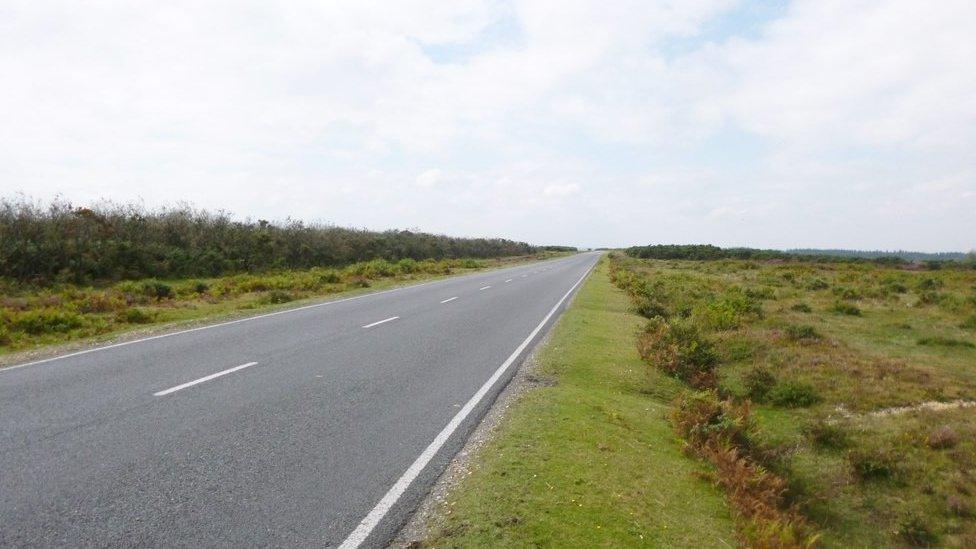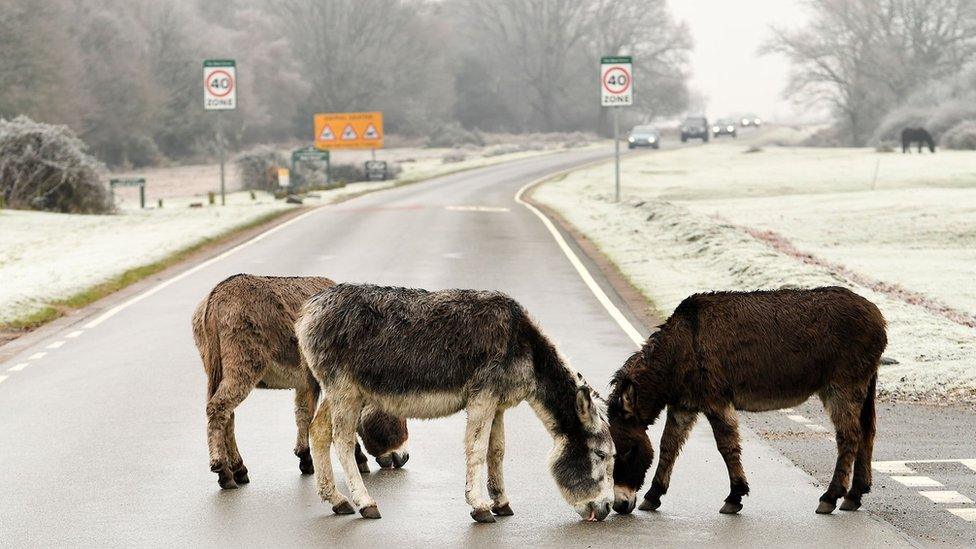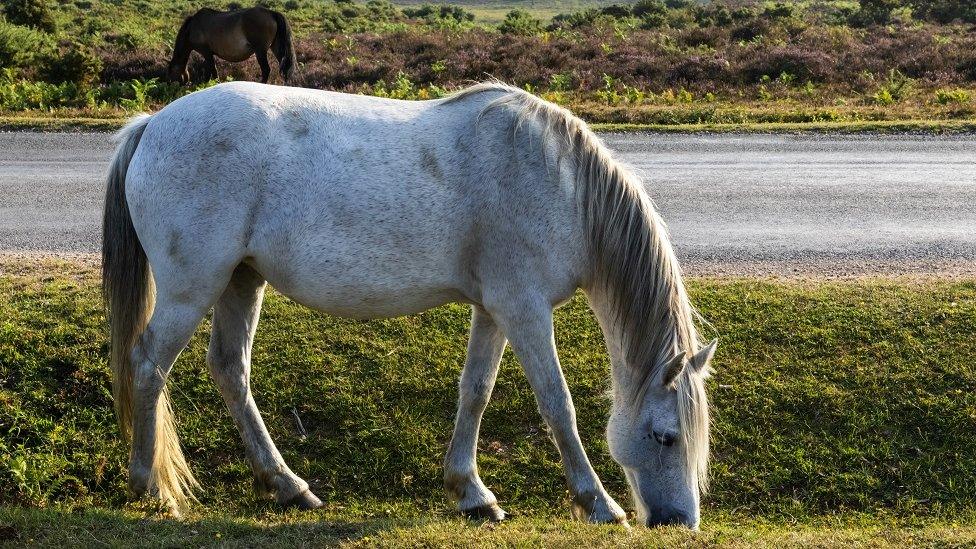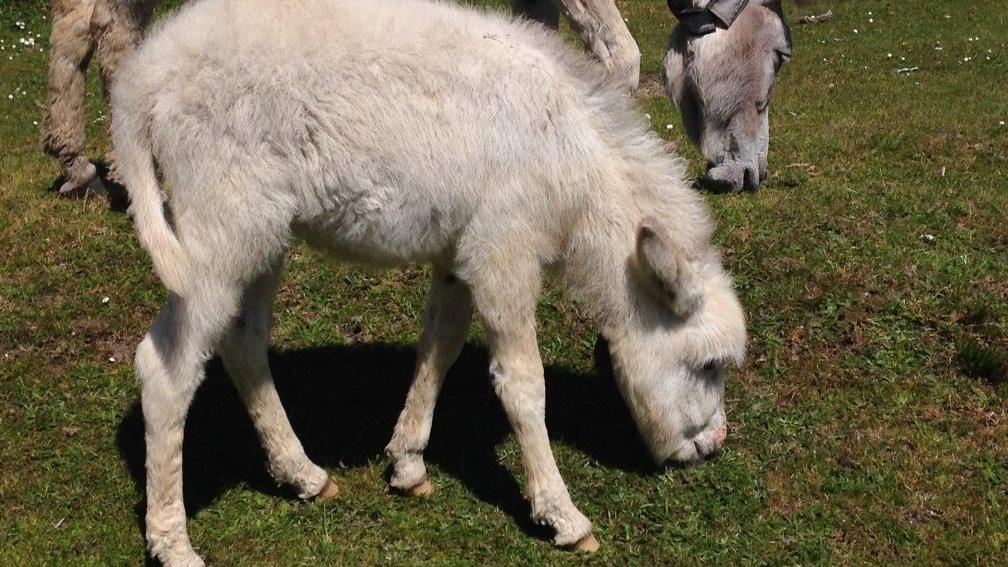New Forest animal deaths: Study begins into average speed cameras
- Published

Roger Penny Way is the worst area for animal road deaths in the New Forest
A study into using average speed cameras to help reduce animal deaths in the New Forest is set to begin.
More than 60,000 people signed a petition calling for cameras to be installed in the national park.
Hampshire County Council said it would look into the technical, legal and environmental issues of installing cameras on the B3078 Roger Penny Way.
An opposition councillor warned "big reservations" remained about the costs and viability.
New Forest commoners have led calls for average speed cameras following a series of high-profile accidents on the road.
Edward Heron, leader of New Forest District Council said it was "making progress" on introducing a number plate recognition system along with the county council, police and forest organisations.
"We all recognise this is a high priority, but it is an unfortunate reality of work of this nature that the sticking point has been money.
"There is now the clear commitment to fund this project and the full support of partners to take forward this important work."

Campaigners have called for tougher measures to prevent animal road deaths in the New Forest
The feasibility study is set to cost between £30,000 and £50,000.
Data published by the National Park Authority shows overall animal road deaths are at a 30-year low, external, despite more animals grazing in the forest.
David Harrison, who sits on both New Forest District Council and Hampshire County Council said money would be better spent on speed enforcement throughout the forest.
"Everyone wants to see collisions with animals reduced in the New Forest - not just on this one road.
"There still remain big reservations about whether it is even possible to fit average speed cameras in the highly sensitive habitat of the New Forest," he added.
Prior to 2021, Hampshire Constabulary said there was "no policing justification" or funding available for a number plate recognition system.
However, Police and Crime Commissioner Donna Jones said she had since "listened and acted" over supporting the feasibility study.
The New Forest is one of the largest remaining areas of unenclosed land where commoners' cattle, ponies and donkeys roam throughout the open heath.

Follow BBC South on Facebook, external, Twitter, external, or Instagram, external. Send your story ideas to south.newsonline@bbc.co.uk, external.
Related topics
- Published14 January 2022

- Published11 December 2021

- Published13 September 2021

- Published13 December 2020

- Published5 December 2014
